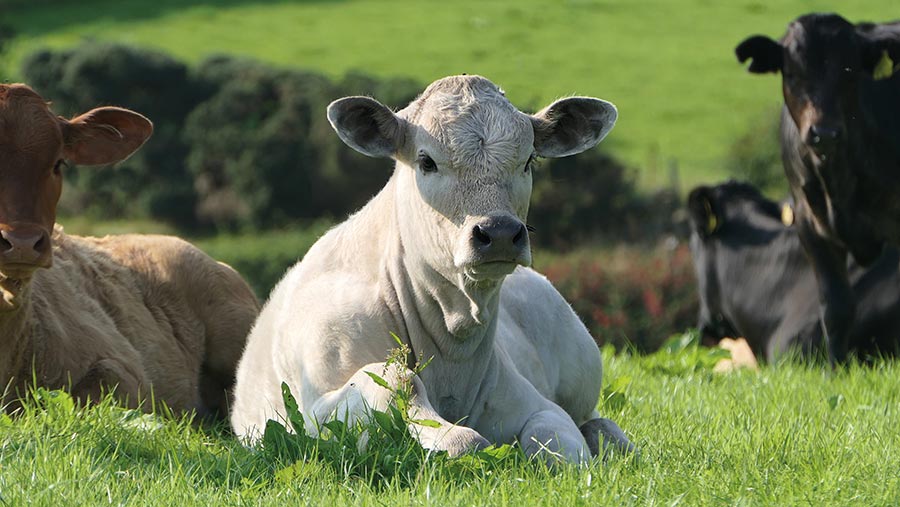Nerves over forage and costs before suckled calf sales
 © Adobe Stock
© Adobe Stock Pre-sale jitters are building as suckled calf producers ready stock for sale, hoping rain, beef prices and a contracting suckler herd mean the value of quality cattle is supported.
Farmers Weekly looked at some positive and negative factors playing on the value of calves this autumn.
Positive and negative factors affecting suckled calf prices |
|
|
Up factors +£ |
Down factors -£ |
|
|
‘Second choice £200 less’
Contracting suckler cow numbers were in evidence at Carlisle last week (24 September), which yarded 50 fewer autumn-born yearlings than a year ago, but saw trade lift £50 a head as a result.
James Little, auctioneer at Harrison & Hetherington, said 420 350-400kg yearlings met a “sharper trade than expected”. Steers lifted £40.97 on the year to £1,229, while heifers lifted £52 to £1,213.
He said costs were understandably creating nerves ahead of suckled calf sales. “Anything requiring a lot of feed, attention and expense is probably going to see a bit of a decline in value this year.
“In the weekly Wednesday store cattle ring, it’s noticeable that anything with strength and size is a strong price, but anything showing the effects of the weather or a little bit off the mark can easily be £200 a head less.”
Gethin Rees of Exmoor Farmers said more rain was needed to green up the South West ahead of Cutcombe’s big two-day sale (31 October and 1 November) at which 70% or more are Charolais sired and all at least three-quarter suckler bred.
“We have to remain quietly optimistic that there will be a good trade, given the quality of cattle we will have on offer, and hope buyers have enough fodder made.”
He said the store lamb trade had seen long-term lambs part ways with the prime lamb price and predicted this trend could follow for smaller cattle.
The numbers
-23.4
Drop in spring-born bullock calf trade (p/kg) at Portree (Skye) – 1,395 calves were yarded, 93 more on the year. Bullocks levelled at 278.4p/kg, while heifers averaged 264.4p/kg, back 25p/kg on the year
£19.66
Increase in price of two-year-old store steers (a head) on the year in August at £1,203 (Defra)
£808
Average price (a head) for yearling heifers in August, back £18 on the year (Defra)
